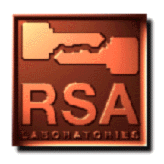

A group signature, introduced by Chaum and van Heijst [CV91], allows any member of a group to digitally sign a document in a manner such that a verifier can confirm that it came from the group, but does not know which individual in the group signed the document. The protocol allows for the identity of the signer to be discovered, in case of disputes, by a designated group authority who has some auxiliary information. Unfortunately, each time a member of the group signs a document, a new key pair has to be generated for the signer. The generation of new key pairs causes the length of both the group members' secret keys and the designated authority's auxiliary information to grow. This tends to cause the scheme to become unwieldy when used by a group to sign numerous messages or when used for an extended period of time. Some improvements [CP94] [CP95] have been made in the efficiency of this scheme.